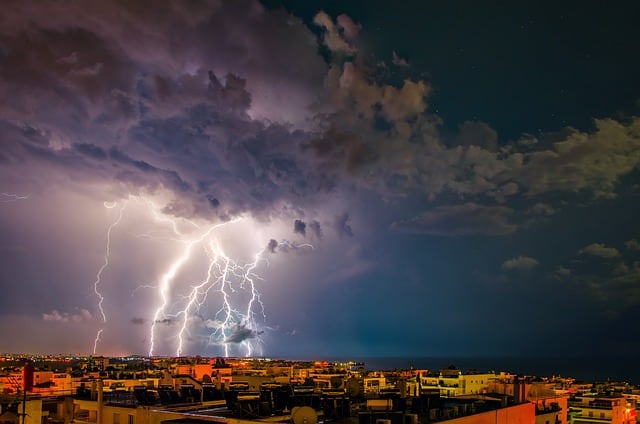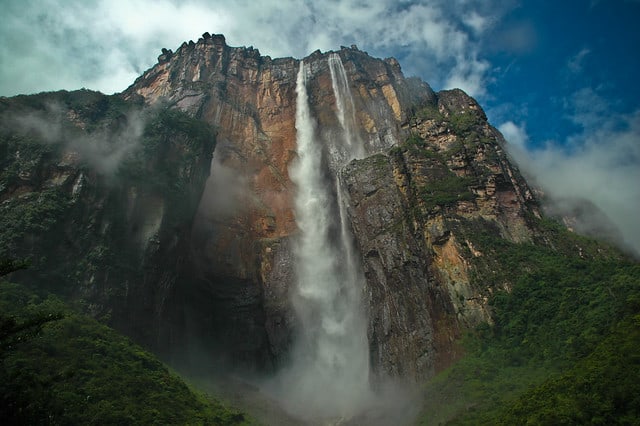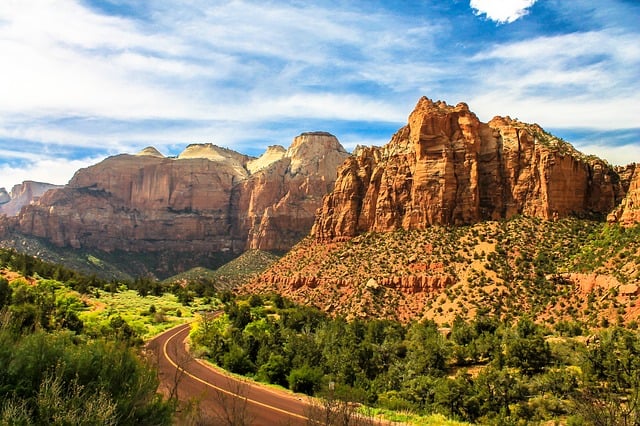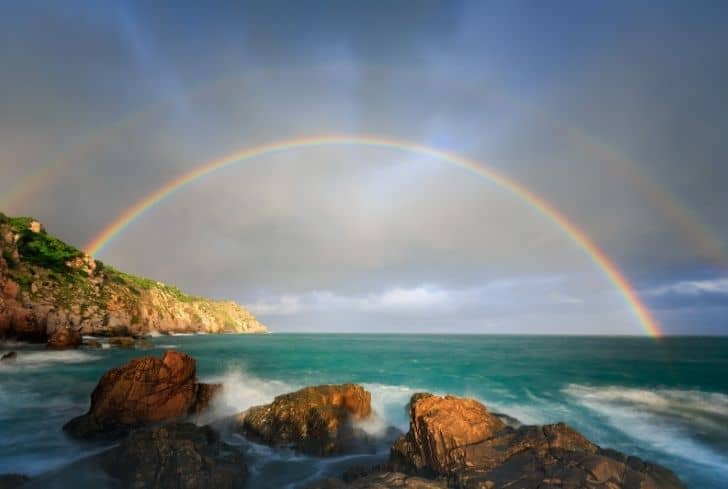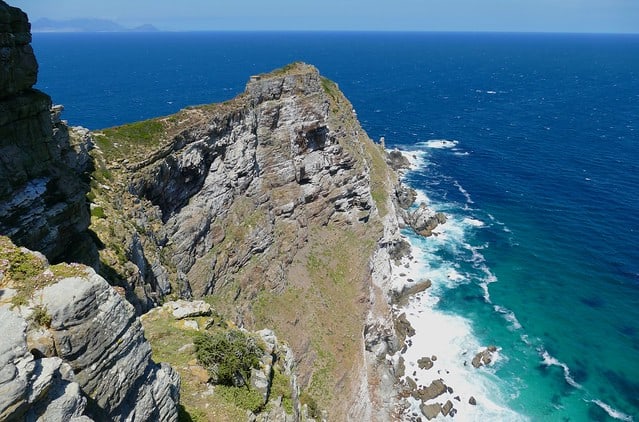7 Continents of the World (Countries and Area Size)
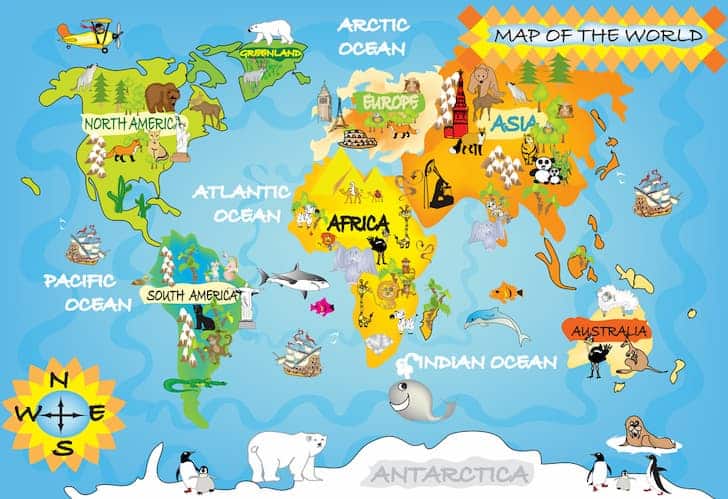
The planet earth is made up of vast landmasses, which makes up where all human beings live. Among all the planets in the solar system, the earth offers the most diverse landmass features. These landmasses are known as continents covering 1/3rd area of the planet. According to the Pangaea Theory, the earth was originally one large landmass that slowly separated into different parts due to plate tectonic movements.
After the splitting and drifting, a process that is still ongoing according to geologists, it has resulted in seven major continents that are home to millions of plants, animals, and humans.
These continents are made up of many countries and they include Antarctica, Africa, Asia, Europe, Australia, South America, and North America.
List of 7 Continents of the World
Below are the details of the 7 continents of the world along with the number of countries, area size, and most populous city.
1. Antarctica
Of all the continents, Antarctica is the southernmost. According to geographers, the south pole of the earth is contained in Antarctica. Because of these characteristics, this continent is the most uninhabitable in the entire face of the earth.
It has a population of fewer than 5000 people, making it the least inhabited continent on earth. Furthermore, it home to only a few animal and plant species. Only the cold-adapted organisms have adaptive mechanisms to survive in this environment.
Antarctica is the coldest continent on earth and most of its landmass is made of permanent glaciers. The glaciers cover approximately 1.9 kilometers thick which translates to about 98% of the entire continent.
Among the continents, Antarctica is the fifth largest almost doubling the size of Australia. It is widely known as the coldest, driest, and windiest of all continents. It is also the continent with the highest elevation and is regarded to be a complete desert. The temperature in Antarctica can reach as low as -89 degrees Celsius.
Number of Countries: No permanent inhabitants; except scientists maintaining research stations in Antarctica
Area (km2): 14,000,000
Most Populous City: McMurdo Station
2. Africa
Africa is the second-largest continent and also the second-largest in terms of population. It is made up of 54 countries and hosts about one billion people. Most of the human population in Africa are said to be younger than 19 years of age. Out of the entire world’s population, 15% live in Africa. Africa also constitutes 20% of the total landmass area in the whole world.
Africa is centrally located in the earth with the equator in the middle of it. What makes Africa unique is the fact that it has its landmass stretching all the way from the northern temperate to the southern temperate zones.
The climate in Africa is widely tropical in nature, but the southern and northern parts have temperate climatic conditions. Africa is considered to be the cradle of mankind as the oldest fossils of Homo sapiens found till presently are from the eastern locations of the African continent. The greatest concern of Africa as a continent is the presence of a large number of diverse
Africa is bordered by the Indian Ocean to the southeast, the Atlantic Ocean on the west, the Red Sea and the Suez Canal to the northeast all along the Sinai Peninsula, and the Mediterranean Sea in the north. Various archipelagos such as Madagascar are also part of the African continent.
Number of Countries: 54
Area (km2): 30,370,000
Most Populous City: Lagos, Nigeria

3. Asia
Asia is the largest of all continents and covers about 9% of the total earth’s surface. It is the most populated continent on earth with an estimated human population of 4.3 billion people. As such, the Asian population has a significant role to play in the economy of the world.
Asia is situated in the eastern and northern hemispheres of the earth and covers approximately 30% of the earth’s total landmass area. It is historically recorded that the earliest human populations of the earth were from the Asian continent.
Accordingly, history has it that 60% of the planet’s mankind populations were previously in the Asian continent. The Asian continent has densely populated settlements with some regions barely populated.
The Asian continental boundaries are not well defined as there is no clear geographical demarcation between Asia and Europe. These two continents form a big landmass which is commonly termed as Eurasia.
On the northern side of Asia, there is the Arctic Ocean, the Indian Ocean to the south and the Pacific Ocean to the east. The Asian continent is popularly known for its vast variety in terms of ethnic groups, history, economics, environments, culture, and government systems.
Number of Countries: 50
Area (km2): 44,579,000
Most Populous City: Shanghai, China
4. Europe
Europe is the second smallest of all the seven continents. It is composed of the western peninsula of the massive Eurasian land surface area. Europe covers 2% of the Earth’s surface and 6.8% of the earth’s total landmass. Europe is made up of about 50 countries and it’s the third most populated continent. Russia is the largest country in Europe which takes up approximately 40% of Europe’s land area.
Europe is separate from Asia by the watershed divides of the Caucasus and the Ural Mountains, the Caspian Sea, the black sea, Ural River and the waterways linking the Aegean Sea and the black sea.
Europe is surrounded by the Mediterranean Sea in the southern side, the Atlantic Ocean in the west, the Arctic Ocean in the northern side. Europe is primarily linked with the advent of western culture, civilization and the industrial revolution.
Number of Countries: 51
Area (km2): 10,180,000
Most Populous City: Moscow, Russia
5. Australia
Australia is termed as a single country continent. It is the sixth-largest country by total land surface area and remains the smallest among the seven continents. It is also known as the island continent owing to its isolated location and small size. Australia is situated in the Indo-Australian plate and it is encircled by the Pacific Ocean and the Indian Ocean.
It is the least populated continent and boasts high levels of biodiversity. The largest coral reef in the globe, the Great Barrier Reef, is located in Australia stretching over 2000 kilometers in the northeast coast. It has various archipelagos such as Tasmania and other smaller islands.
It is mainly inhabited by indigenous Australians. Australia is ranked as one of the best countries in terms of provisions of quality of life, social welfare in general, and economic and political liberties.
Number of Countries: 14
Area (km2): 8,600,000
Most Populous City: Sydney, Australia
6. South America
South America is situated in the western hemisphere with the majority of its landmass occupying the southern hemisphere and a small section on the northern hemisphere. On the western side, it is bounded by the Pacific Ocean, the Atlantic Ocean in the eastern and northern side, and the Caribbean Sea and North America in the North Westside.
It has a population of about 406 million and is ranked as the fourth largest continent in terms of land surface area and fifth in terms of the number of inhabitants. South America has 12 states and it’s a subcontinent of America. It has diverse biodiversity and geographic features.
For example, the world’s largest undisturbed waterfall, angel falls, is located in Venezuela in South America. The Amazon River, regarded as the longest and largest river in the world in terms of volume, is also located in the continent. The Amazon forest, regarded as the largest rainforest on the planet, is again found in South America.
The Atacama Desert, the driest non-polar region on the globe, is also located within this continent. It also has diverse biodiversity including very unique plant species and animals such as piranha, anaconda and jaguar. Brazil is the largest country in South America taking up more than half of the continent’s population and land area. The majority of South America’s population is located in the eastern and western coasts. Other regions are sparsely populated.
Number of Countries: 12
Area (km2): 17,840,000
Most Populous City: São Paulo, Brazil
7. North America
The North American continent lies completely in the Northern Hemisphere. It is surrounded by the Atlantic Ocean in the east, the Arctic Ocean in the north, the Pacific Ocean in the west and south, and the Caribbean Sea and South America in the southeast. It covers about 4.8% of the earth’s surface and makes up approximately 16.5% of the entire landmass of the earth.
North America hosts almost 565 million people, which constitutes nearly 7.5% of the whole globe’s population. It is the third-largest continent in terms of land cover and fourth-largest in terms of population. Most of the regions in the continent are dominated by the United States of America, Mexico, Canada and Greenland.
Number of Countries: 23
Area (km2): 24,709,000
Most Populous City: Mexico City, Mexico

